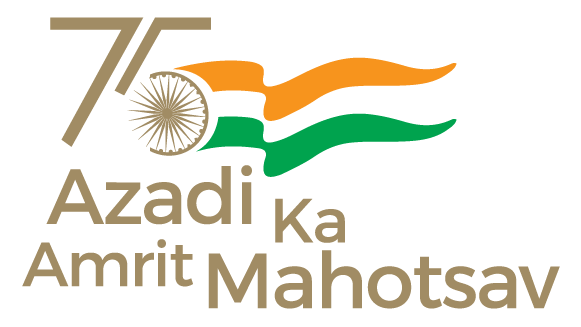Ministry of Commerce & Industry

India’s Growing Influence in Global Innovation: A Look at WIPO 2024’s Intellectual Property Report
Posted On: 16 NOV 2024 5:17PM by PIB Delhi
The World Intellectual Property Organization (WIPO) annually publishes the World Intellectual Property Indicators (WIPI) report, which provides a comprehensive analysis of global trends in intellectual property filings. The 2024 report highlights the growth and evolution of patents, trademarks, and industrial designs across key global economies, with particular attention to emerging markets and innovation hubs. Among these economies, India stands out as a rapidly growing player in the global IP landscape, making significant strides in all three major IP categories—patents, trademarks and industrial design. India has solidified its position as a global leader in intellectual property filings, securing a spot in the top 10 countries for patents, trademarks, and industrial designs. This achievement underscores India’s growing innovation capacity, with the country making remarkable strides in patent applications, brand protection, and design innovations. One of the most remarkable findings in the 2024 report is India’s exceptional performance in the global IP landscape. India recorded a phenomenal +15.7% growth in patent applications in 2023, continuing its streak of double-digit growth for the fifth consecutive year. This surge places India among the top countries contributing to global patent filings, signaling the country’s increasing role as a global innovation hub. The resilience of IP filings during the COVID-19 crisis further underscores the enduring importance of intellectual property in driving economic recovery and growth.

India’s Stellar Growth in Patent Applications Global Ranking:
India now ranks 6th globally in terms of patent applications, with 64,480 patent filings in 2023. This puts India among the leading nations, including China, the United States, Japan, and South Korea, in terms of intellectual property activity. India’s rise in global patent rankings is particularly notable given its vast and diverse economy, ranging from traditional sectors like agriculture to cutting-edge industries like pharmaceuticals, information technology, and renewable energy.
- Resident Filings Lead:
For the first time in history, more than half (55.2%) of India’s patent applications in 2023 were filed by residents, a significant milestone. This demonstrates India’s increasing domestic innovation capabilities, with Indian companies, universities, and research institutions now playing a major role in generating new technologies and intellectual property. This trend reflects the effectiveness of the government’s efforts to foster an innovation-friendly environment and to support local inventors through initiatives such as the National Intellectual Property Rights (IPR) Policy and the Atmanirbhar Bharat campaign.
- Growth in Patent Grants:
India also saw a 149.4% increase in the number of patents granted in 2023 compared to the previous year. This rapid growth in granted patents underscores the efficiency of India’s patent office in processing applications and granting IP rights. It also reflects the rising quality of applications being filed, with many innovations meeting global standards. This progress signifies India’s growing maturity as a hub for technological and scientific development.
- Patent-to-GDP Ratio:
India’s patent-to-GDP ratio—a measure of the economic impact of patent activity—grew significantly, from 144 in 2013 to 381 in 2023. This means that as India’s economy expands, its patent activity is scaling up in tandem, signalling the increasing importance of innovation in driving economic growth. A higher patent-to-GDP ratio is often seen as a sign of a knowledge-driven economy, where innovation and intellectual property play a central role in economic development.
Surge in Industrial Design Applications
- Record Growth:
India’s industrial design applications surged by 36.4% in 2023, further emphasizing the country’s expanding focus on creativity, design, and manufacturing innovation. This growth reflects a greater emphasis on aesthetic and functional design across various sectors, such as consumer electronics, automobiles, fashion, and healthcare. The surge in design applications is indicative of India’s evolving capabilities not only in manufacturing but also in product development and value-added industries.
- Sectoral Focus:
India’s industrial design filings were led by key sectors such as Textiles and Accessories, Tools and Machines, and Health and Cosmetics. These sectors accounted for nearly half of all design filings, underscoring India’s strength in both traditional industries like textiles and emerging sectors like health and cosmetics. The textile and fashion sectors, in particular, benefit from India’s rich cultural heritage and the increasing demand for innovative product designs, both domestically and internationally.
- Impact on India’s Manufacturing:
The surge in industrial design applications highlights the ongoing transformation of India’s manufacturing sector. As industries focus more on product aesthetics, functionality, and user experience, India’s manufacturing ecosystem is diversifying beyond basic production into more value-added, design-driven industries. The growth in design applications is a clear indication of how the country is positioning itself as a global manufacturing hub that prioritizes innovation, quality, and design excellence.
- Comparison to Global Trends:
India’s growth in industrial design applications is notable when compared to global IP filing trends. While countries like China and the United States continue to dominate in the patent and trademark space, India’s rising figures in industrial design reflect its increasing competitiveness in product design and creativity. This aligns with broader global trends where countries are investing more in industrial design as a strategic asset to drive economic growth and enhance product differentiation in the market.
Trademark Filings: A Global Leader
- Global Trademark Ranking:
India ranked 4th globally in trademark filings in 2023, with a 6.1% increase over the previous year. This growth underscores India’s growing emphasis on brand protection and intellectual property as essential drivers of business success. India’s ranking reflects the country’s increasing number of domestic and international businesses, all of which rely on trademarks to protect their brands and ensure consumer trust.

- Resident Filings Dominate:
Nearly 90% of India’s trademark filings in 2023 were made by Indian residents, reflecting a strong domestic focus on brand protection. This shift suggests that Indian businesses, entrepreneurs, and startups are becoming more IP-savvy and are increasingly leveraging the trademark system to protect their innovations and brands.
- Active Trademark Registrations:
India now holds the second-largest number of active trademark registrations in the world, with over 3.2 million trademarks in force. This indicates a highly active and competitive domestic marketplace, where businesses are not only creating new products but also working diligently to protect their brand identities. The large volume of active trademarks positions India as a major player in the global brand protection landscape, benefiting from both domestic innovation and the growing demand for Indian brands in international markets.
- Sectoral Trends:
The largest proportion of trademark filings in India came from sectors such as Health (21.9%), Agriculture (15.3%), and Clothing (12.8%). These figures highlight India’s leadership in areas such as pharmaceuticals, food production, and fashion. As global demand for Indian products continues to rise, the importance of trademark filings as a tool for safeguarding brand equity becomes ever more critical, ensuring that Indian products and services maintain their competitive edge in international markets.
India’s Position in Global IP Trends
- Contribution to Growth:
India’s rising IP filings have been a significant part of the global trend of increased intellectual property activity. In 2023, a record 3.55 million patent applications were filed worldwide, with India contributing a meaningful share to this figure. As one of the fastest-growing markets in terms of IP filings, India is helping drive the global increase in innovation and IP protection, particularly in emerging markets.
- Shift Towards Local Innovation:
The growth of resident filings in India—especially in patents and trademarks—demonstrates a shift towards local innovation. While global IP filings have traditionally been dominated by multinational corporations, India’s rising resident filings reflect a maturing domestic innovation ecosystem backed with the idea of Atmanirbhar Bharat campaign. More Indian companies and individuals are filing patents and trademarks, not just for protection, but as part of a strategy to strengthen their competitive advantage in both local and global markets.
Government Initiatives Fuelling IP Growth
- National IP Policy:
A key factor driving India’s growth in IP filings is the National Intellectual Property Rights (IPR) Policy, launched in 2016. This comprehensive framework is designed to guide the development and protection of intellectual property in India. The policy focuses on improving IP awareness, strengthening the IP ecosystem, and encouraging innovation by providing better access to IP services and protection mechanisms. By integrating all forms of intellectual property—such as patents, trademarks, industrial designs, copyrights, geographical indications, and more—the policy aims to foster a more robust and efficient IP environment. Objectives and activities undertaken under the National IPR Policy
- Amendments to IPR Laws: Improvements in procedural requirements to speed up the processing of applications.
- Modernization and Digitization of IP Offices: To enhance the performance and functioning of IP offices, streamlining workflows and reducing processing times.
- Awareness and Education: Programs such as the National Intellectual Property Awareness Mission (NIPAM) to spread IP awareness across educational institutions and businesses.
- IP Commercialization: Establishment of Technology Innovation Support Centres (TISC) in universities to support IP filings and the commercialization of patents and other IP.
- Scheme for Pedagogy & Research in IPRs for Holistic Education and Academia (SPRIHA), which aims to integrate IPR education into higher learning institutions across the country. Under the SPRIHA scheme, IPR Chairs have been established in various universities and academic institutions to facilitate specialized research, teaching, and training in intellectual property. These IPR Chairs provide a platform for faculty members and students to engage in cutting-edge research on intellectual property, its role in innovation, and its impact on industries and society.
- India’s vibrant start-up ecosystem is another key driver of the country’s growing IP activity. Government initiatives like Start-Up India, Digital India, Make in India and the Atal Innovation Mission, the Indian government has continuously fostered entrepreneurship, research, and technological advancement. Startup India was launched on January 16, 2016, with the goal of nurturing entrepreneurship, building a strong startup ecosystem, and transforming India into a nation of job creators rather than job seekers. This initiative includes a variety of programs designed to support emerging entrepreneurs. These efforts are coordinated by the Startup India Team, which reports to the Department for Promotion of Industry and Internal Trade (DPIIT). As of September 30, 2024, DPIIT has officially recognized 1,49,414 entities as startups.
- Atal Innovation Mission (AIM), established in 2016, is a flagship initiative of the Government of India to promote a culture of innovation and entrepreneurship across the country. AIM adopts a comprehensive approach to foster problem-solving and innovative thinking in schools, while also creating an entrepreneurial ecosystem in universities, research institutions, and the private and MSME sectors. Till date, AIM has established 10,000 Atal Tinkering Labs in Schools across the country, more than 3500 startups are incubated at Atal Incubation Centres and have created more than 32000 jobs in the ecosystem
India as a Global Innovation Powerhouse
India’s remarkable progress in the 2024 WIPO Report highlights its role as a rising global leader in intellectual property. With significant growth in patents, trademarks, and industrial designs, India is becoming a hub of global innovation. Its increasing number of resident filings demonstrates a shift toward homegrown creativity and invention, supported by an innovation-friendly ecosystem and government policies.
Looking ahead, India is poised to continue its upward trajectory in global IP rankings. The country’s diverse and rapidly growing economy, coupled with its focus on research and development, makes it well-positioned to maintain its strong position in the global IP landscape. As more Indian companies and creators protect their innovations, India’s global role in intellectual property will continue to expand.
Reference:
https://pib.gov.in/PressReleasePage.aspx?PRID=2072706
https://www.meity.gov.in/writereaddata/files/National_IPR_Policy.pdf
https://copyright.gov.in/Documents/SPRIHA.pdf
https://pib.gov.in/PressReleasePage.aspx?PRID=1941489
https://pib.gov.in/PressNoteDetails.aspx?NoteId=153223&ModuleId=3®=3&lang=1
*****
Santosh Kumar/Ritu Kataria/Ishita Biswas
(Release ID: 2073890) Visitor Counter : 480




















